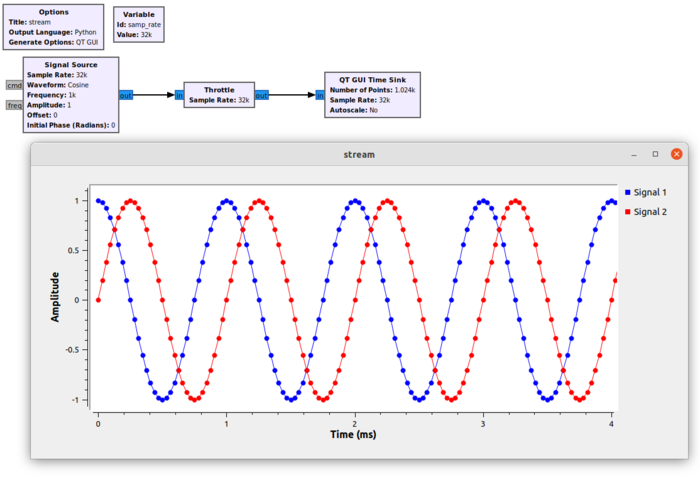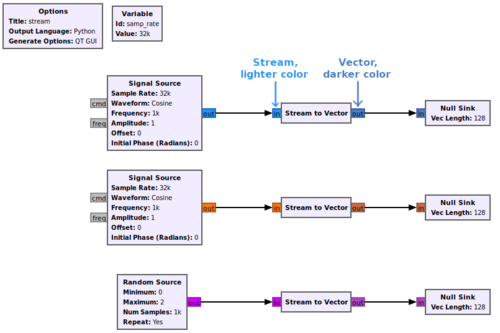Streams and Vectors
This tutorial will describe the difference between a Stream and a Vector. You can find the previous tutorial here: Converting Data Types
Streams
Streams in GNU Radio are what convey the information between blocks and are represented by the arrows connecting blocks in a flowgraph. A stream must have a data type, such as Float 32 or Byte. A stream carries 1 sample for each time instance and are used to represent and process serial data.
The Signal Source block produces a Complex Float 32 stream. The output of the block at each time instance contains 1 complex sample:
Vectors
Vectors carry multiple samples per time instance, representing data in parallel. By analogy, a stream represents a scalar at each time instance, whereas a vector represents an array at each time instance.
GRC uses darker colors to represent vector outputs:
- note: use an image

